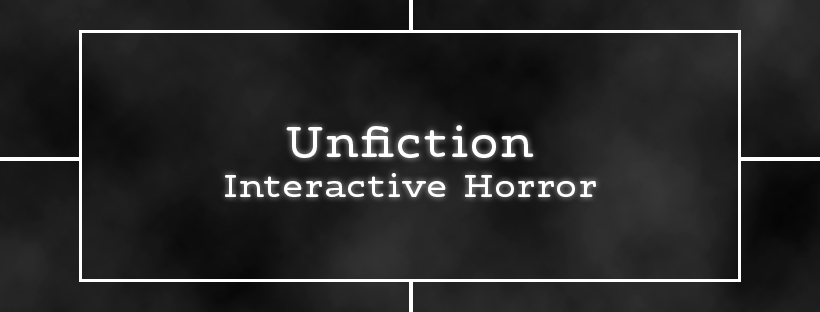Jason Voorhees, Freddy Krueger, and Hannibal Lecter: these are all well-known mainstream horror characters. However, there exists an entire underground world of horror media. One that thrives on viewer participation. This genre of interactive horror, born mostly from the internet, is called Unfiction. Also known as “This is (Not) a game story telling.”
Unfiction is a type of fictional media (usually, but not always, horror) that presents itself as occurring in reality. This presentation allows for unique puzzles and varying amounts of user interaction that is typically unseen in most other forms of media.
Unfiction devotee Nick Nocturne, known online as Nightmind, splits Unfiction into three categories based on the level of viewer interaction. Each type has a different level of interaction that pushes the story forward and/or broadens the understanding of the story better.
Alternate Reality Games
An ARG according to Nightmind is ”a fictional experience taking place across the internet, physical locations, or both that uses a variety of platforms, media, and actors to deliver narrative material and opportunities to interact, but never acknowledges it’s fictional state and needs audience interaction to deliver a story.”
In short, an ARG is a “game” or production spread across various mediums that presents itself as real and requires viewer or “player” involvement to progress the story. If there are no players, the game will not progress. An example of this would be the ever-ambiguous Noc+10 alternate reality game.
Noc+10 is an ongoing ARG about an abandoned aquatic research station named ‘Nocturne’ (not related to Nightmind) and an entity within that wants to die but cannot. Through codes hidden in the videos it is revealed that Research Station Nocturne was in the deepest point in the ocean, The Marianas Trench. The reason it was abandoned was also revealed, and these plot elements were only found by solving the mysterious codes broadcasted by the Research Station Nocturne. Thus, making this an ARG.
Interactive Project
According to Nightmind, “ARGs and interactive projects are both fictional experiences that don’t acknowledge their fictional nature and are designed with interaction in mind, but while ARGs require audience participation (play), interactive projects don’t, offering interaction as an option.” You can watch all the videos in a series in order and understand on a basic level…until you dig deeper and start to understand the narrative even better.
An example would be the shared world of The Monument Mythos,Cornerfolklore, and The House In The Ocean by Alex Casanas/ALEXKANSAS/MISTER MANTICORE and various collaborators for sound design and voice acting.
All three series while starting out standalone all now connect to a broader narrative that’s about various terrors tied to the US government and world monuments, as well as metaphorically being about the dangers of political division. As well as the dangers of untreated grief, trauma and various other related topics through the lens of a “Analog Horror” series.
Unlike Noc+10, the interactive elements are purely optional. YouTube comments, in character notes in the video description, and in character QnA’s that all help understand the story and context on a deeper level but aren’t needed to understand the story at face value.
Immersive Narratives
The last form of Unfiction are Immersive Narratives. Like ARG’s and interactive projects, Immersive narratives are focused on presenting their stories as “really occurring” and the various tools used by other forms of unfiction can be used as well. The main difference according to Nightmind is “Information can be provided outside of that [main] platform, but it will not be necessary for the audiences comprehension of story events and ability to follow along, and it won’t greatly impact their understanding at the end” more or less bringing this form of Unfiction into line with more typical media.
An example of this is the series Petscop by Tony Domenico. Petscop starts out innocently enough as a Pokémon clone game for the first PlayStation about an alien-esq creature with the title of “Newmaker.” Soon after playing and capturing some of the pets, the player (A man named Paul) enters a cheat code written by the person who gave him the disk. Afterwards, the bright and colorful game turns into a much more realistic looking world (By 90’s game graphics standards) that’s filled with cryptic mystery’s pertaining to Paul’s real childhood trauma and the mysteries surrounding his near and extended family.
In the end, Unfiction is an incredibly diverse form of media, regardless of what series you follow, and one that means a great deal to me personally. I’ve met countless friends and amazing people from these stories over the years, and it’s helped me through quite a lot of dark moments. If this was interesting to you, I will leave a few links to resources to get into it further.
https://www.nightmind.info/ – The Nightmind Index
A website that catalogues Unfiction series of various genres, as well as stories of various Unfiction creators
https://www.argn.com/ – ARGNet
A forum and news website for Alternate Reality Games and Unfiction




